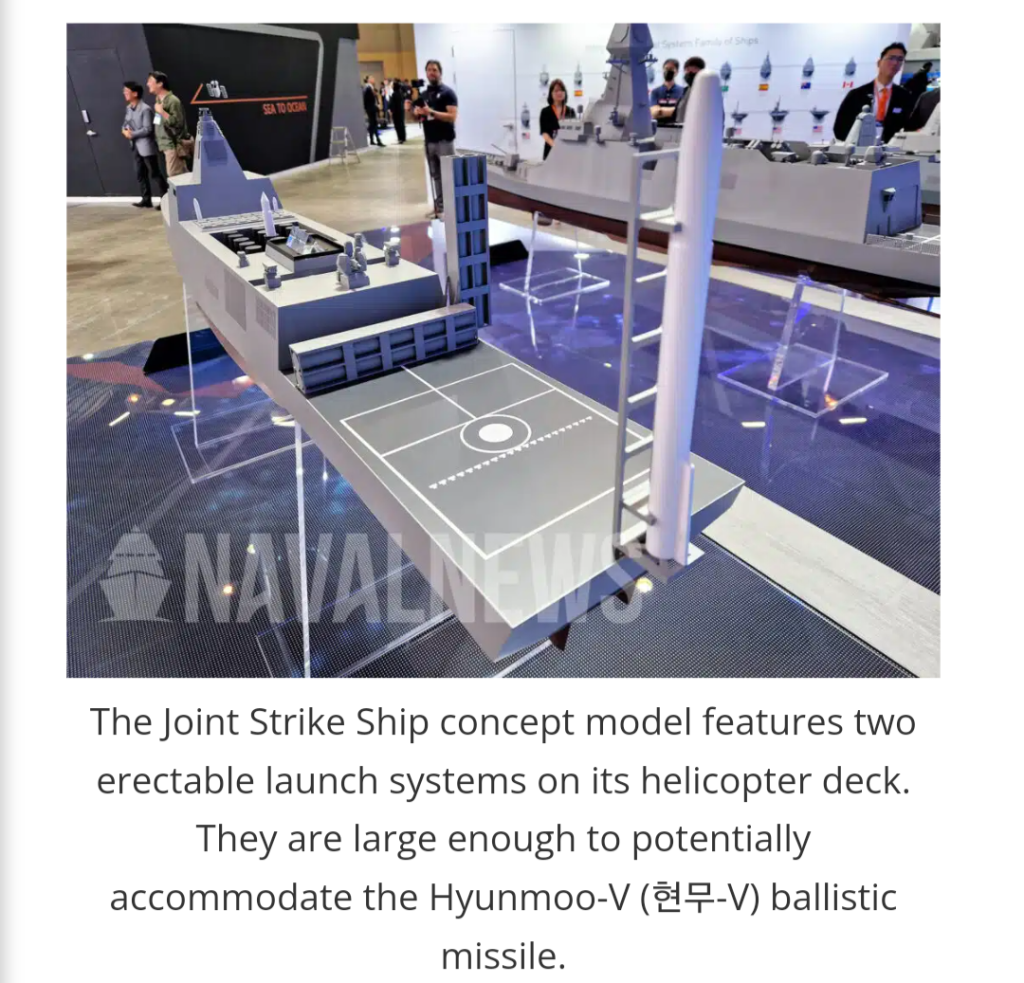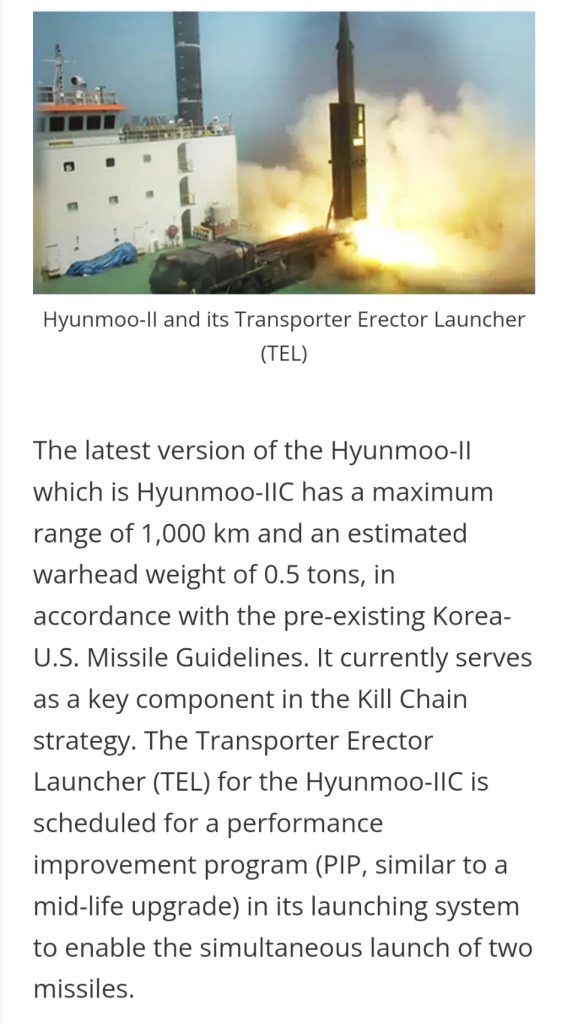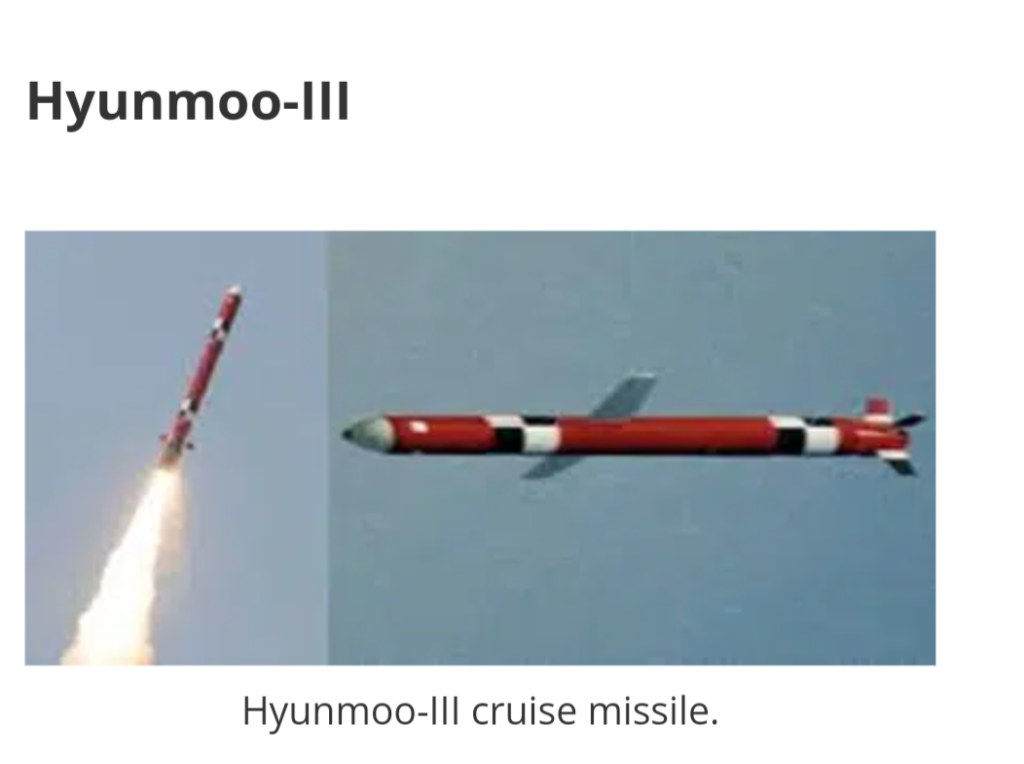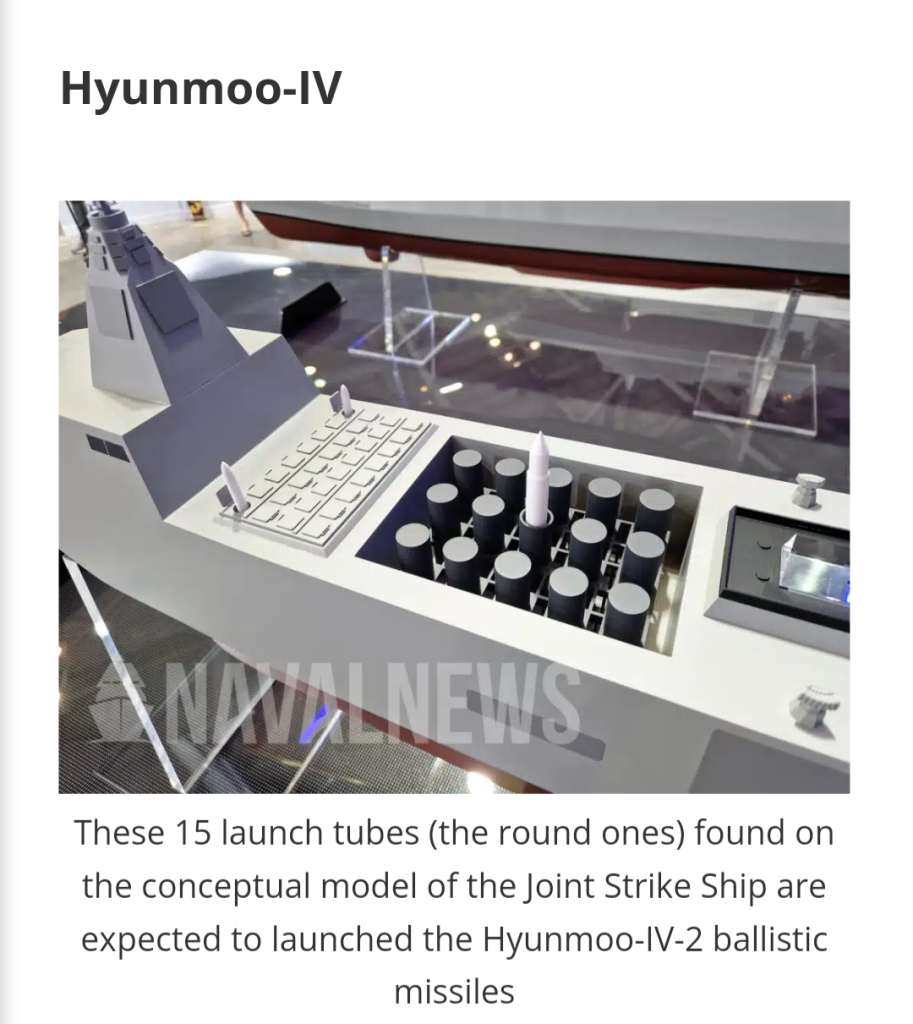The Hyunmoo-V ballistic missile. Photo: South Korean defense ministry. Hyunmoo-IV-4 SLBM being successfully launched from KSS-III Batch-I submarine.
Seoul, South Korea. JULY 19th. 2023.
South Korea has announced the successful development of the HYUNMOO-V Ballistic Missile to be fitted on the country’s future arsenal ship known as “Joint Strike Ship”, currently being designed for the Republic of Korea (ROK) Navy.
Sources told local media that the weapon system underwent trial launches earlier this year, marking the culmination of the development and testing phase.
Seoul plans to begin mass production of the Hyunmoo-V later this year, with a maximum capacity of 70 units annually.
The target is to field up to 200 missiles to support the operations of the future Joint Strike Ship being developed by Hanwha Ocean.
About the Hyunmoo-V.
Hyunmoo-V is part of South Korea’s Hyunmoo family of ballistic missiles consisting of several variations.
The first version has already been decommissioned, while the variant before the Hyunmoo-V is still undergoing acceptance trials.
The Hyunmoo-V has a maximum range of 3,000 kilometers (1,864 miles) and a warhead weight exceeding eight tons.
It is designed to destroy enemy underground command centers, nuclear missile bases, and other key facilities at speeds close to Mach 10.
The missile also delivers a “massive” destructive power, triggering tunnel collapses through artificial earthquakes.
SALIENT FEATURES OF HYUNMOO V MISSILE.
1.) Additionally, they are planning to equip the upcoming Joint Strike Ship, which is currently undergoing conceptual design by Hanwha Ocean, with the Hyunmoo-V missile.

2.) The Hyunmoo-V is developed as a key component of the South Korean three-axis system, specifically for the Korea Massive Punishment & Retaliation (KMPR) doctrine. It is designed to target enemy underground command centers, nuclear missile bases, and other key facilities during times of conflict. When striking a target, Hyunmoo-V will deliver its massive destructive power into the enemy’s underground system thus triggering tunnel collapse through artificial earthquakes.
Specifically, the weight of the warhead is estimated to be around 8 to 9 tons which is the heaviest among conventional ballistic missiles, minimum range is 300km. Maximum range is 3,000km with a reduced warhead size and weight. The warhead can destroy structures deeper than 100 meters below the surface, missile speed is close to Mach 10 in the descending phase.
North Korea has extensively constructed over 7,000 underground facilities. The regime use them for the production, storage and transport of WMDs, ROK Military developed Hyunmoo-V with warhead mostly composed of heavy metal to penetrate into these underground facilities with kinetic energy.
After the repeal of the ROK-US missile range guidelines, restrictions on the range of ballistic missiles and rockets have been lifted. Consequently, both the Hyunmoo-V and the currently being developed hypersonic missile will experience an increase in their maximum range and warhead sizes.
Hyunmoo family of missiles.
Since the development of Hyunmoo-I in 1986, the Republic of Korea has continuously worked on expanding its Hyunmoo family of missiles, which consists of several variations. They serve as the most powerful strategic weapon in the South Korean inventory and a means of deterrence against potential adversaries. The ROK Military has chosen to persist with the technologically challenging solid-fuel propulsion system during the development process of the Hyunmoo family. Although the solid-fuel propulsion system poses greater challenges in development compared to liquid-fuel systems, solid-fuel rockets are known for their reliability, and quick response capabilities. In contrast to the Scud series ballistic missiles used by North Korea, which require lengthy pre-launch procedures, the Hyunmoo series boasts quick launch capability and the flexibility to adapt to diverse weapon systems. North Korea, however, is now also trying to develop its own solid-fuel ballistic missiles.
While Hyunmoo-I (which was based on american Nike Hercules missile from the 1960s) has been decommissioned, the ROK Military is currently fielding the Hyunmoo-II Short-Range Ballistic Missile (SRBM) and Hyunmoo-III cruise missile. Both systems are in active service. The Hyunmoo-IV and Hyunmoo-V ballistic missile development is completed and both missiles are currently under testing but not yet fielded. Here is a brief overview of the Hyunmoo family of missiles:
The latest version of the Hyunmoo-II which is Hyunmoo-IIC has a maximum range of 1,000 km and an estimated warhead weight of 0.5 tons, in accordance with the pre-existing Korea-U.S. Missile Guidelines. It currently serves as a key component in the Kill Chain strategy. The Transporter Erector Launcher (TEL) for the Hyunmoo-IIC is scheduled for a performance improvement program (PIP, similar to a mid-life upgrade) in its launching system to enable the simultaneous launch of two missiles.
The Hyunmoo-III, is not a ballitic missile. It is the only cruise missile in the Hyunmoo series. The Hyunmoo-IIIC currently in service has a maximum range of 1,500 km. The future Hyunmoo-IIID currently under development will have a range of 3,000km. The cruise missile features a warhead weight of 0.5 tons and travels at a subsonic speed to reach its target.
The naval variants of the Hyunmoo-III include the ship-launched land attack cruise missile known as “C-Star-II” and the submarine-launched land attack cruise missile dubbed “C-Star-III”.
C-Star-II missiles are currently in operation with the ROK Navy’s Maritime Task Flotilla Seven (제 7기동함대) which is based in Jeju Naval Base. The ships known to operate them are KDX-II / Chungmugong Yi Sun-sin-class destroyers and KDX III Batch 1 / Sejong the Great-class destroyers. They are launched from KVLS-I cells.
Currently, the C-Star-III is deployed on the KSS-II and KSS-III Batch-I submarines and launched from the torpedo tubes.
The Hyunmoo-IV ballistic missile, developed in 2020, is currently undergoing trials before its deployment for active service. It has a maximum range of 800 km and a warhead weight exceeding 2.5 tons. As for the Hyunmoo-III cruise missile, the Hyunmoo-IV ballistic missile also comes in naval variants.
The Hyunmoo-IV-2 variant is specifically designed for surface ships, including the Joint Strike Ship.
Furthermore, the Hyunmoo-IV-4 variant, known as the Korean SLBM, was successfully launched in 2021 and 2022 from the VLS on the KSS-III Batch-I submarines. These submarines are capable of carrying a total of six Hyunmoo-IV-4 SLBMs. In addition to the KSS-III Batch-I, KSS-III Batch-II, which is currently being constructed by Hanwha Ocean, will be feature 10 VLS for the Hyunmoo-IV-4 SLBMs.




